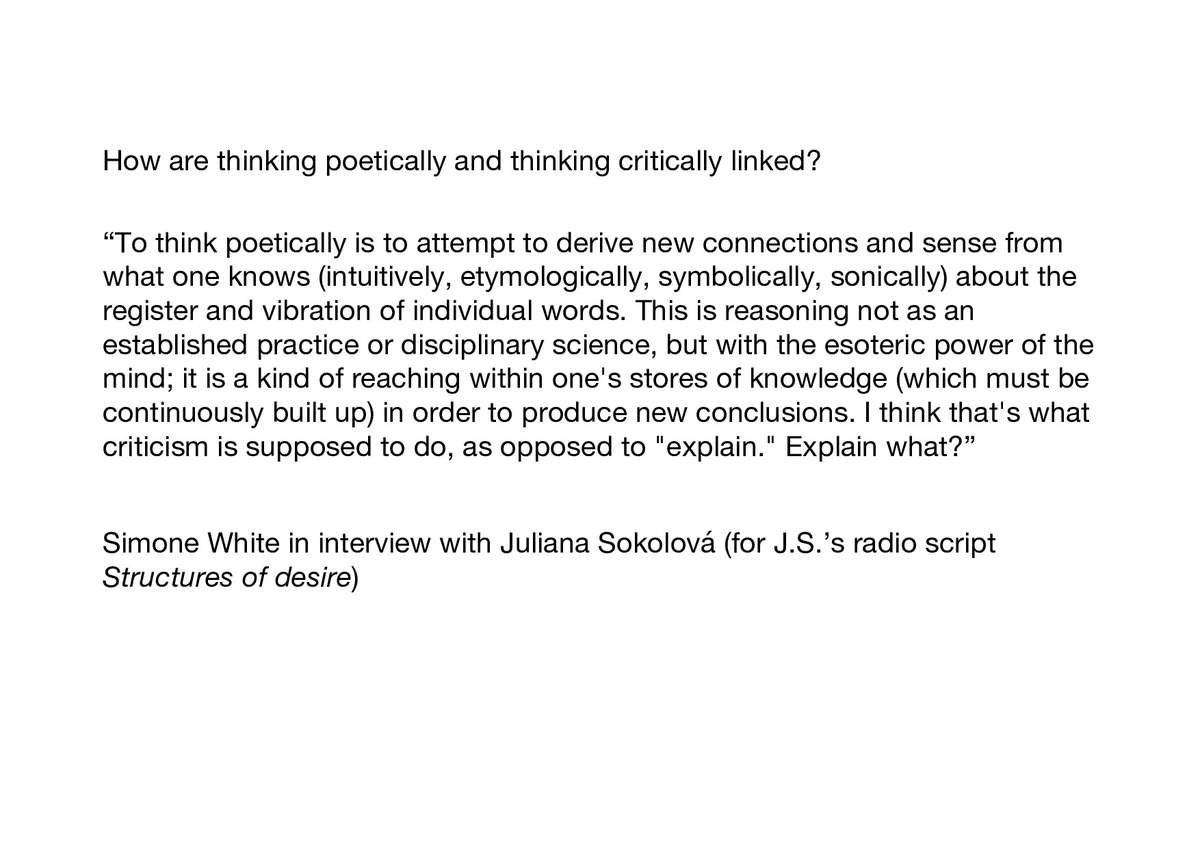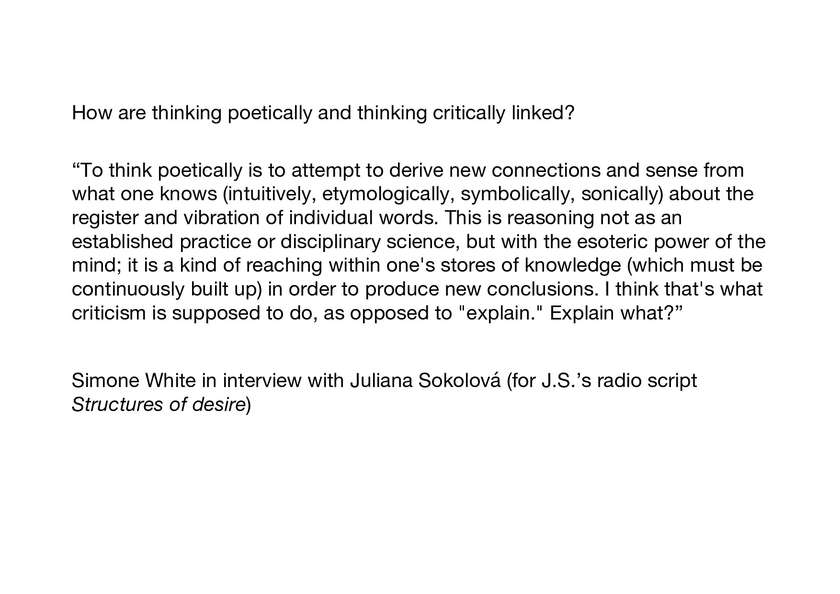Idea by
Juliana Sokolová
Call for ideas 2019
The buildings that mean you must live
The buildings that mean you must live

- Site-specific cases
The most fascinating element of writing about architecture is following the resistance and requirements of the specific material to be written on: first the wildness of fabulation, the associations, the fictions, the resonances of words, the possible lives; then a calming down, a seriousness, intuiting the connections, composing, listening to the resonances again. Because of this it is not possible to propose a concept for the book independent of the specific projects and the ways they are told. Instead I propose an approach to writing it:
Language: searching for a language that relates the ideas to human intensities without clichés. Relating English to the languages in which the ideas were first thought
Audience: architecture in the context of living or trying to live. Book that is accessible to a general audience beyond creative professionals
Format: text that enables the intoxicating experience of solitary reading but is open to adaptations,e.g storytelling in architectural space

The buildings that mean you must live
The buildings that mean you must live

- Site-specific cases
The most fascinating element of writing about architecture is following the resistance and requirements of the specific material to be written on: first the wildness of fabulation, the associations, the fictions, the resonances of words, the possible lives; then a calming down, a seriousness, intuiting the connections, composing, listening to the resonances again. Because of this it is not possible to propose a concept for the book independent of the specific projects and the ways they are told. Instead I propose an approach to writing it:
Language: searching for a language that relates the ideas to human intensities without clichés. Relating English to the languages in which the ideas were first thought
Audience: architecture in the context of living or trying to live. Book that is accessible to a general audience beyond creative professionals
Format: text that enables the intoxicating experience of solitary reading but is open to adaptations,e.g storytelling in architectural space
